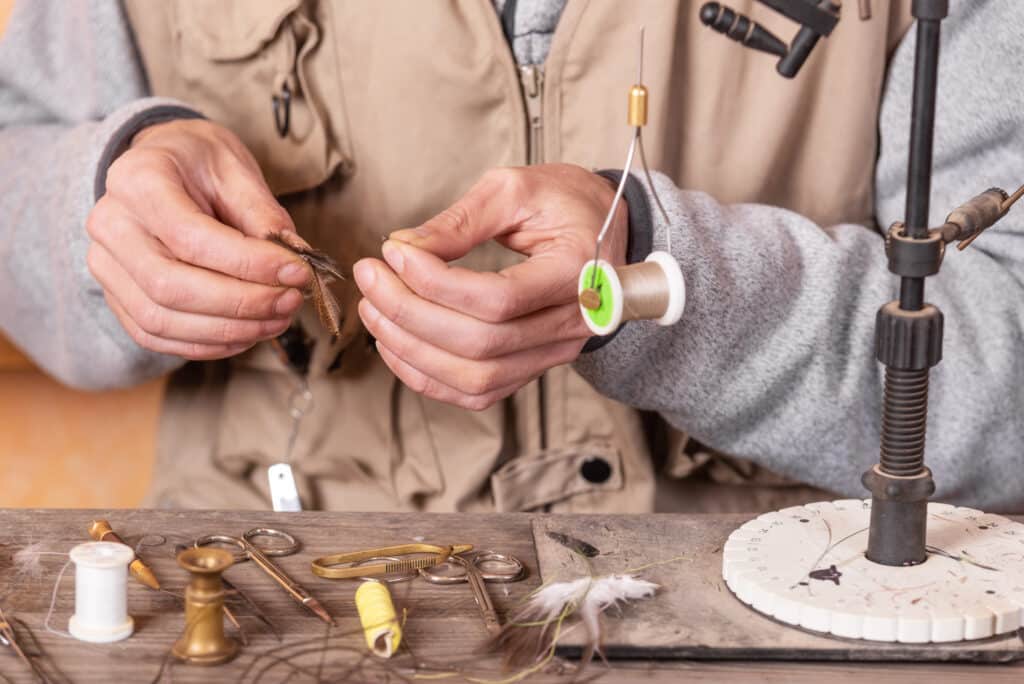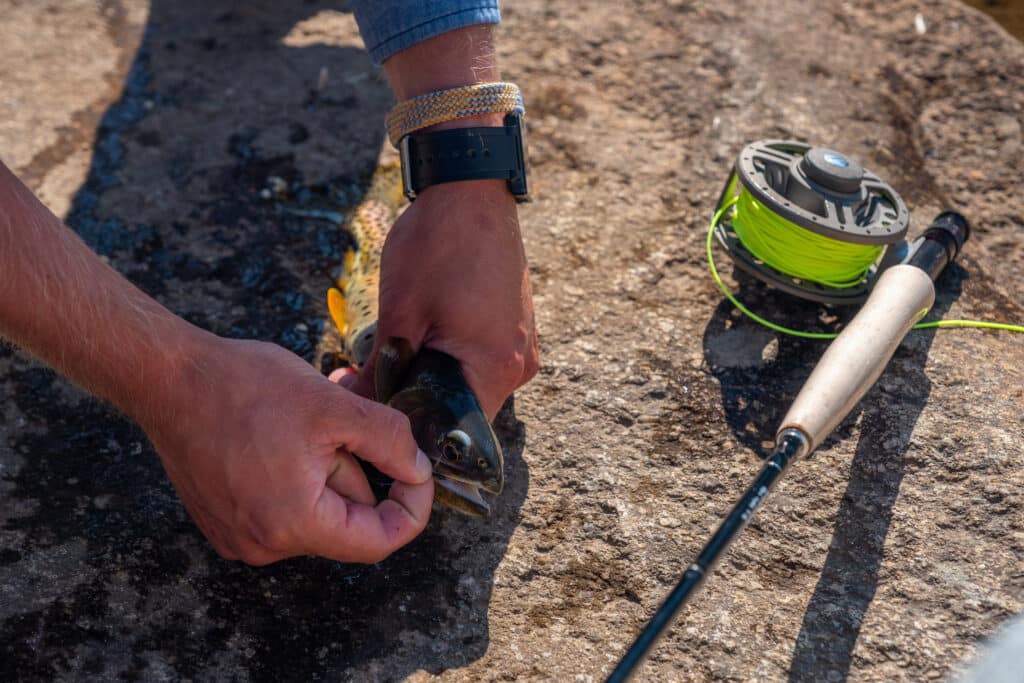Fishing tackle is every angler’s best friend.
Using the correct equipment according to your environment, target species, and varying conditions is often the key to a successful fishing trip.
In this article, we’ll focus on chatterbait, one of the most common and effective types of lures for freshwater fishing.
If you’re deciding on giving lure fishing a try, there are a few things you’ll need to know, and below we will discuss how to rig your chatterbait correctly to ensure you get the most out of your new change in approach.
So without further ado, let’s take a look at how to tie a chatterbait so you can get your line in the water pronto!

Contents
Why use chatterbait?
The simple answer is versatility.
Chatterbait is unique due to its astounding movement in the water and easy retrieval.
These lures come in various colors, shapes, and sizes.
Chatterbait generally has three main parts, which are:
- Blade – This is the main part of the lure and is the part that creates the vibrations that attract the fish.
- Body – This is an extension of the blade and comprises several wires which create the chattering property when casting into water. The most common colors of chatterbait bodies include blue, black, bluegill, and shad. It would be best if you always aimed to use body colors that resemble existing fish in the region. For example, if your local fishing spot has a fair amount of light or white fish, then a shad chatterbait will be your best option.
- Hook – Generally, chatterbait comes with one hook attached to the blade of the chatterbait; however, continuous improvements have seen up to three hooks now being added.

Instructions to tie a chatterbait
All you’ll need is your fishing line, pliers, and chatterbait.
As with most things in fishing, it can be a little tricky at first but will become easier as you become more familiar with the process.
Here’s a quick step-by-step method to follow to tie a chatterbait:
Step 1
Take a moment to identify where the line goes. You should notice a wire with a circular loop along the blade.
This loop is known as the eyelet. Depending on the type of lure you decide to use, this may be less visible at first, especially on smaller lures and those with more decoration.
Many newbies to lure fishing have been found to tie their line to the blade.
Don’t make this mistake. If the eyelet is not present, then it may have broken off.
Therefore you’ll need a new lure. The line goes through the loop, always.
Step 2
Once you thread the line through the eyelet, pull enough line through the eyelet according to the depth you want your hook to descend.
Generally, 3 – 5 feet on line is a good length, but 2 feet will work well if you’re in shallow water.
Tip: Take a moment to consider where you will be fishing. You do not want your chatterbait rolling around the floor of the river or lake you’re fishing.
Step 3
This is probably the most important step.
You’re now going to secure the chatterbait with the help of a loop knot.
Every angler has their preference of knot, mainly based on strength and flexibility, so you should choose the one you’re happy with.
For newer anglers, we recommend either the overhand knot or Palomar knot.
If you’re unfamiliar with the different types of knots, below is a quick guide to tying a basic knot that should work perfectly.
- Double about 6 inches of line and thread it through the eyelet.
- Tie a simple knot (left over right) in the doubled line. The hook should be hanging loosely in the center.
- Pull the end of the loop downward and pass it completely over the hook.
- Finally, pull both ends of the line, and that should draw up the knot. Trim any excess in the line.
Tip: Moisten your line while tying your knot. This makes the line less rigid and much easier to tighten.
Step 4
At this point, your chatterbait should be fully rigged and ready to test.
Ideally, a few casts into your usual fishing spot would be perfect, but if you’re practicing at home beforehand, chatterbait makes it possible to practice on land as well.
Try to refrain from testing on hard surfaces like tar and concrete.
Find a piece of open ground or grass, cast, and reel as you would while fishing. Be sure to check your hooks afterward to ensure that they are still sharp.
How does chatterbait work
As you probably already know, fish are very sensitive and aware of their surroundings.
Like all animals, they adapt to their surroundings to survive.
Chatterbait, like all fishing lures, is designed to enter the fish’s habitat undetected.
The blade is designed to create a rattling or clicking sound.
These sounds create vibrations in the water, which fish detect and are lured to.
Due to its streamlined shape, the chatterbait can move through more difficult conditions without becoming snagged in any vegetation.
The general method of fishing with chatterbait is to cast and retrieve it fairly quickly.
The idea is to simulate a living bait fish.
The natural movement of the water over the blade will cause the jig to rotate and swing, simulating normal fish movements.
As your skill improves, you can start adding a few twitch and pause variations.
Conclusion
Chatterbait is a great weapon in any fisherman’s arsenal.
These lures are perfect for freshwater fishing because they are designed to simulate the movement and vibrations created by normal bait fish and easily navigate difficult terrain such as muddy waters and structures where a common hook and bait setup can become snagged and tangled.
The variety of colors and sizes allows the fisherman to choose one that resembles the look of the fish in the local area, which causes larger fish to approach it.
This will improve your chances of landing your desired catch. Good luck and happy fishing!







